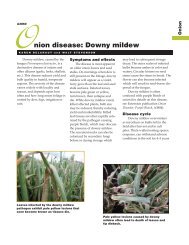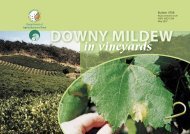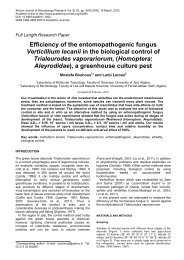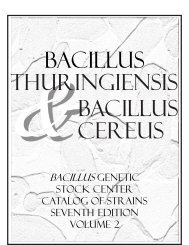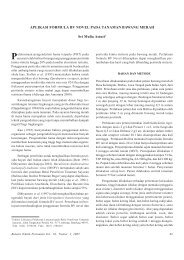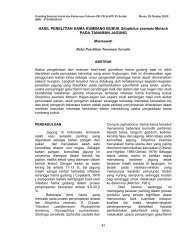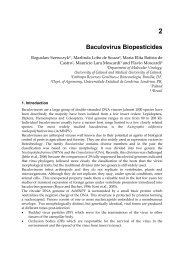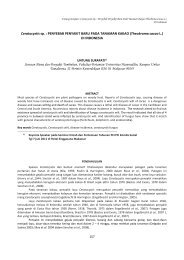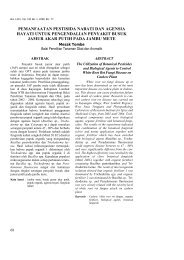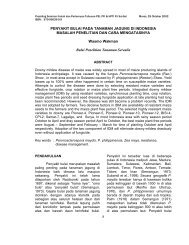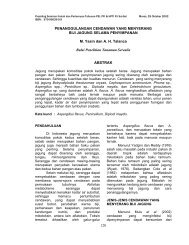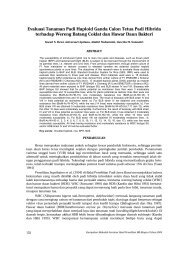Maize weevil - Sitophilus zeamais
Maize weevil - Sitophilus zeamais
Maize weevil - Sitophilus zeamais
Create successful ePaper yourself
Turn your PDF publications into a flip-book with our unique Google optimized e-Paper software.
PaDIL - Plant Biosecurity Toolboxhttp://www.padil.gov.au/pbt | <strong>Maize</strong> <strong>weevil</strong> - <strong>Sitophilus</strong> <strong>zeamais</strong>There are four larval instars all of which remain within the grain. Immediately on hatching, the first instarfeeds by burrowing through the tissues of the grain. At the end of the fourth instar the larva uses amixture of frass and larval secretion to close off the end of the burrow, to form a pupal cell. Under normaldevelopmental conditions, <strong>weevil</strong> larvae allow their frass to accumulate around them inside the grain inwhich they are feeding. However, if the carbon dioxide level exceeds 5%, the fourth instar larva makes asmall hole in the grain and ejects much of the frass. The larva then assumes a prepupal form for a shortperiod before transforming into the pupa (Longstaff 1981).When the adult has developed, it remains inside the grain for several days before emerging, with the timevarying with temperature (Longstaff 1981). During this time, it's cuticle hardens and matures.Adults emerge and females move to a surface above the food to release sex pheromone. Males areattracted to this pheromone for mating (Mason 2003).Host RangeS. <strong>zeamais</strong> is commonly associated with corn and rice in tropical storage and to a lesser extent in otherraw or processed cereals, including wheat, oats, barley, sorghum, rye and buckwheat (Figs. 1, 2, 3, 4).The range of moisture contents within which it will breed has been found to be much wider than that of S.oryzae and it has been found to attack fruit, such as apples, in storage. S. <strong>zeamais</strong> commonly infestsstanding crops prior to harvest, particularly maize, where the moisture contents can exceed 20% (Anon.2009b, Longstaff 1981, Maceljski & Korunic 1973).DistributionS. <strong>zeamais</strong> occurs throughout the warmer, more humid regions of the world, especially where maize isgrown (Longstaff 1981). It has also been recorded from Canada (Anon. 2009b).Polynesia (Zimmerman 1968), Argentina, Brazil, Burma, Cambodia, Greece, Japan, Morocco, Spain,Syria, Turkey, USA, USSR, Yugoslavia (Maceljski & Korunic 1973).S. <strong>zeamais</strong> is widely distributed throughout growing areas of northern Australia.Last Updated: 27 November 2009 | PDF Made Date: 18 March 2012 | page 4 / 19




